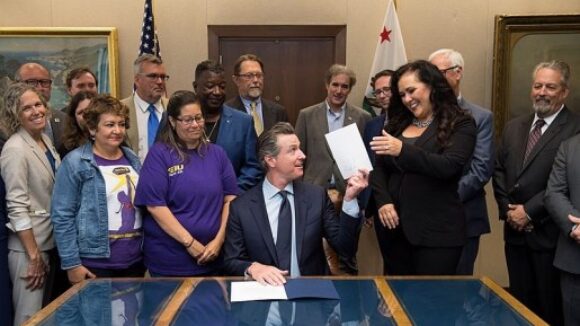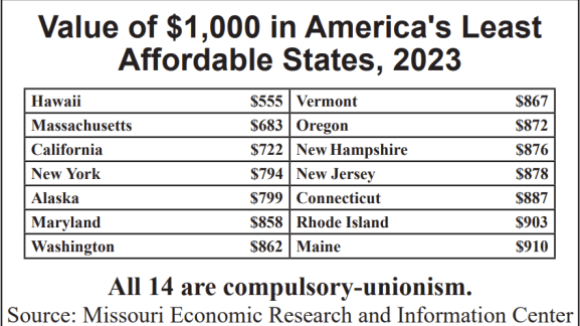‘People Have a Right to Make Their Own Choice’
Avelo employee Kim Howard believes all the firm’s flight attendants should get to vote on continued AFA rule. Credit: WTNH-TV (ABC,…

Michael Hicks is director of the Center for Business and Economic Research and an associate professor of economics at Ball State University understands how Right to Work will help Indiana create jobs and grow. Too bad the sitting Republican governor, Mitch Daniels, does not.
Right-to-work legislation is once again at issue in Indiana and a dozen other states where it would have been unthinkable only a few years ago. It is a good time to review what economists know and do not know about the effects of Right to Work.
To begin with, it seems pretty clear to me that unions have, and always will be, a part of the economic landscape. They’ve been with us in some fashion for at least a millennium and nothing survives that long without benefiting its members. But there are different types of unions. Most professional organizations and trade unions play a role in labor quality and promotion of the industry. Government unions act primarily as bargaining units, while private sector industrial unions have a very different history. It is these latter two that right-to-work legislation targets.
There is abundant research on the economic effects of right to work by economists of both the right and left. The results are pretty clear that right-to-work legislation leads to increased employment. Several studies at the county and state level that account for myriad other factors and trace the issue as far back as the 1940s support this finding. The only questions are (1) is it right to work alone, or other pro-business policies, that boosts job growth? And (2) how big might the job growth be?

Avelo employee Kim Howard believes all the firm’s flight attendants should get to vote on continued AFA rule. Credit: WTNH-TV (ABC,…

California’s Big Labor-concocted A.B.5, signed into law by Gov. Gavin Newsom in 2019, made it almost impossible for workers and firms to bounce back after 2020’s COVID-19 lockdowns. Now Biden bureaucrats want to federalize A.B.5!

On average, forced-unionism states are 23.2% more expensive to live in than Right to Work states. And decades of academic research show that compulsory unionism actually fosters a higher cost of living.